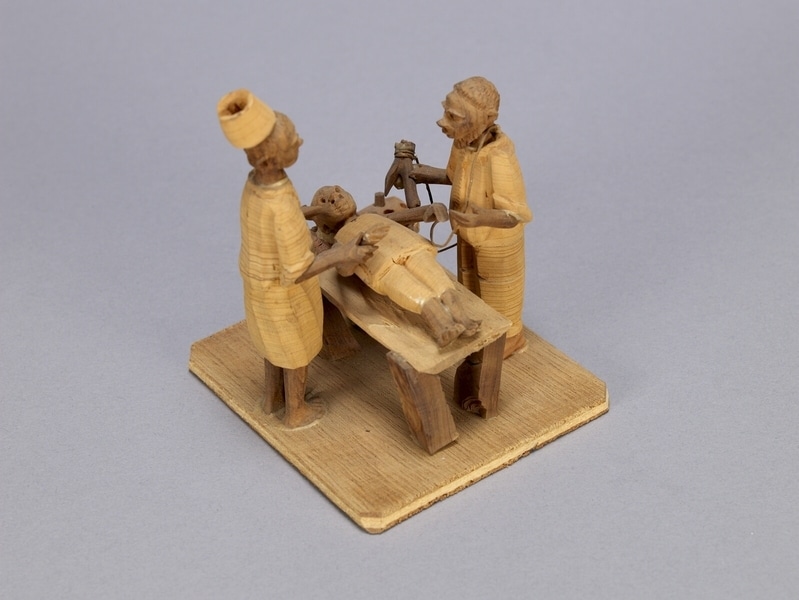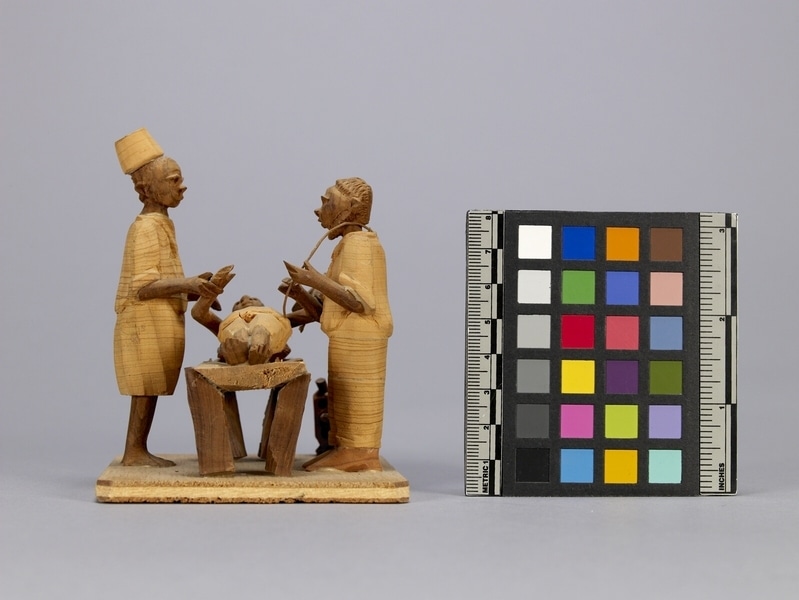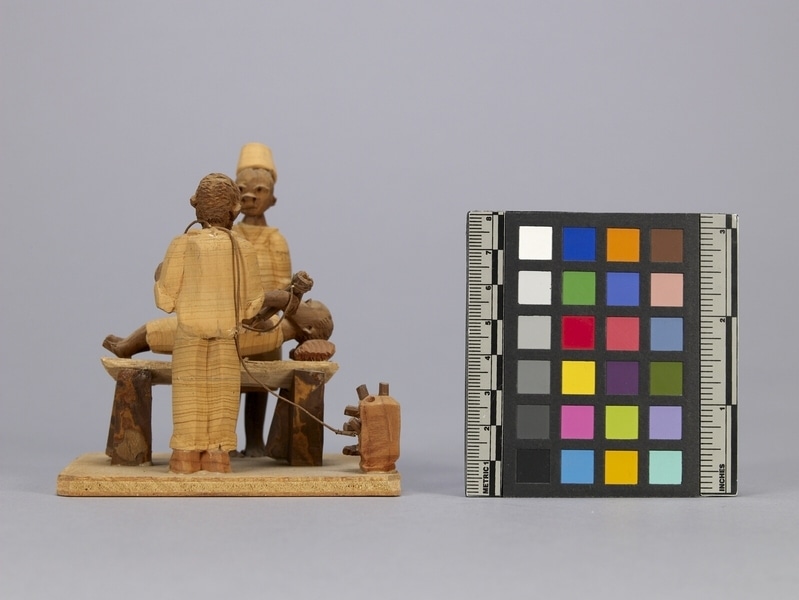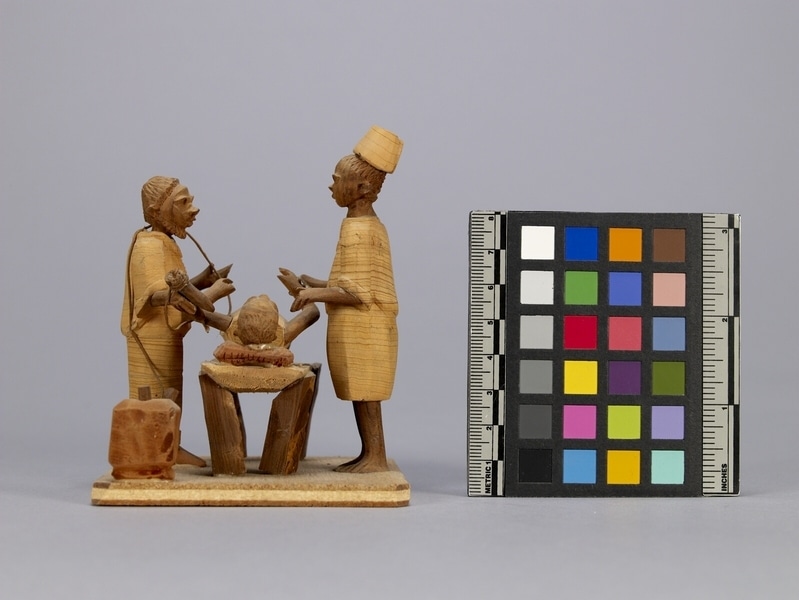Thorn Carving Item Number: Af417 from the MOA: University of British Columbia




Description
Figure representing a man with a sleeveless shirt and pants lying on a narrow wooden table. His head is resting on a small pillow. Attendants are standing on each side of table. One has a knee-length dress and a nurse's type cap, bare feet, and appears to be checking the patient's pulse. The attendant on the other side has a bare head, a beard, a long tunic, trousers, and shoes. He is holding an object which may be a large syringe with a needle inserted into the patient's left arm. A long string or tube is attached to the syringe and leads to a small box-like object on the floor. Box, pillow, and shoes are light red-brown. All heads, limbs, table legs, syringe, plug, and tubes are dark brown. Clothing is light yellow-brown. The base is light brown wood.
History Of Use
Thorn carvings are miniatures depicting scenes from Nigerian life. This type of carving began circa 1930. Thorns vary in size. They can be as large as 12.7 cm. long and 9.6 cm. wide. They are comparatively soft and easily carved. The light yellow-brown thorn and the dark brown thorn come from the Ata tree; the light red-brown thorn comes from Egun trees. The parts are glued together with viscous paste made from rice cooked with water. They are carved by men.
Cultural Context
craft; tourist art
Item History
- Made in Nigeria before 1972
- Collected during 1972
- Owned by Andrew Stewart and Jessie Stewart before February 8, 1980
- Received from Andrew Stewart (Donor) and Jessie Stewart (Donor) on February 8, 1980
What
- Name
- Thorn Carving
- Identification Number
- Af417
- Type of Item
- carving
- Material
- rice adhesive, wood, egun thorn and atum thorn
- Manufacturing Technique
- carved and glued
- Overall
- height 10.8 cm, width 9.8 cm, depth 8.4 cm
Who
- Culture
- Yoruba
- Previous Owner
- Andrew Stewart and Jessie Stewart
- Received from
- Andrew Stewart (Donor) and Jessie Stewart (Donor)
Where
- Holding Institution
- MOA: University of British Columbia
- Made in
- Nigeria
When
- Creation Date
- before 1972
- Collection Date
- during 1972
- Ownership Date
- before February 8, 1980
- Acquisition Date
- on February 8, 1980
Other
- Item Classes
- carvings & sculpture
- Condition
- good
- Accession Number
- 0590/0103